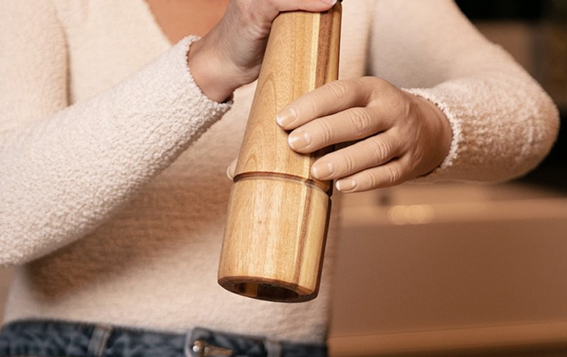News Center
Myoelectric Hand.
2022-09-26 Hits:Myoelectric Hand is a myoelectric prosthesis that is externally controlled by electrical signals naturally generated by the user’s muscles. Compatible with steeper friction wrist joints and EQD wrist joints, or with M12 or 1/2×20 TPI studs, also compatible with third-party wrist joints, Steeper products, or other 6-8.4V powertrains.

The operation of Myoelectric Hand is simple and convenient. There are nine operation modes to choose from. The gloves are soft and durable PVC beauty gloves, which are equipped with integrated switches, thumb-mounted safety release, automatic battery voltage selection (ABV) and other functions. Compatible with the full range of grooming gloves, providing full hand functionality with excellent grooming performance and a natural look. Whether it is going out with friends, or relaxing at home, it is a great solution.

Nine operating modes applied
Selecting different procedures can be used in different clinical applications. Although most patients can exercise both muscle systems, some patients require experimentation to determine the best regimen. Here we included patients with one and two motor systems.
An inexperienced patient may find it very difficult to use the EMG hand for the first time. This may be due to their suboptimal skin condition, or the inability to contract their muscles. An EMG tester can measure the EMG signal and also enable the user to learn to control. However, in many cases, an expensive detector is not needed when the user has the confidence to control the opening and closing of the hand.

Program 0 is suitable for initial use. In order to test EMG signals, the user needs to contract muscles in different positions. Touch these muscles and mark where the muscle contractions are most pronounced.
Only use the EMG signal points that are in contact with the electrodes during exercise. Skin may need to be moisturised at first.
Turn off the switch and remove the inner liner. Set the program to 0. Install it on the table for the user. The battery is BLPA72, the electrode wire is ECA=1000, and the electrode is SEA200.
Turn on the switch, and contract the muscles to observe the movement of the hand. Find a suitable EMG signal location. Mark the best location and secure the electrode position with a baseball bandage or medical tape. Encourage users to do more opening training until they are proficient. Initially, set the control value high so that the user can maintain the signal and keep the hands open for as long as possible. Do this for at least two and a half hours so that you can pick two backup EMG points.

Once the user is confident, the switch can be pushed to the 1 position, controlled with two muscles, and the system can be rebuilt with two electrodes linked to the electrode wire. Procedures 1 and 2 are very similar. During program 1, if both muscles are contracted, the hand will remain open. Then by contracting the muscles on one side, the hand opens or closes. The speed of opening and closing is controlled by the level of muscle contraction.
Under Program 2, the first contraction of the muscle causes the hand to open or close accordingly. This is a very useful option to balance the stronger and weaker muscle signals that are used to place objects when first activating the hand. Programs 3 and 4 are controlled by threshold switches. The hand is controlled by adjusting the strength of the EMG signal on each electrode.
Once the EMG signal was triggered, the hand opened or closed, but when the EMG signal strength fell below a threshold, the hand remained motionless.

Procedure 5 is for users with only one EMG signal. This is a serial program. The user quickly tightens the muscles and the hand opens. The muscles are relaxed, and then the hand can be closed with the next normal EMG stimulation. If you want to turn it on again, you still need a fast EMG stimulation from the user. This procedure is more difficult to master, but still useful for those with limited EMG signals.
Program 7 is similar to this and is a thresholded program. The fast signal opens the hand, and the normal signal closes the hand. Both signals control the hand at a constant speed, but the signal when the electrode is touched must reach a certain threshold. This applies to switch control.
Programs 6 and 7 are most likely to be used by users who have good control of their unilateral muscles.
In program 6, open the hand when the EMG signal is strong. When the muscle relaxes, the hand stops opening, and the hand can be closed during the second normal muscle contraction.
Procedure 8 is suitable for different levels of EMG signals. Promote the opening of the hands and slow the closing of the hands. There are four speeds to choose from depending on the size of the hand.
上一篇:USMC X6 High performance with simple controls 下一篇:Wang Wei, general manager of Shanghai Disan, went to Guizhou and Hunan for friendly exchanges
 DISA GLOBAL WEBSITE
DISA GLOBAL WEBSITE 

